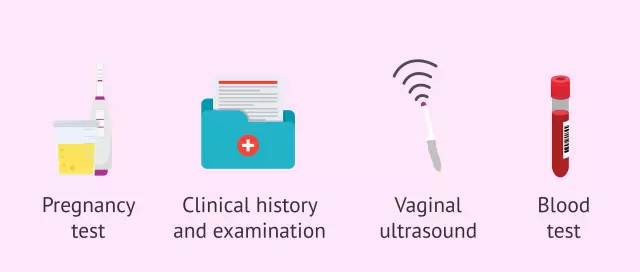- Author Rachel Wainwright [email protected].
- Public 2023-12-15 07:39.
- Last modified 2025-11-02 20:14.
Mycoplasmosis
General characteristics of the disease

Mycoplasmosis is an acute infectious disease caused by mycoplasmas. These microorganisms occupy an intermediate position between protists (single-celled living organisms) and multicellular bacteria and viruses. Among several dozen types of mycoplasma, 4 types are considered dangerous for humans, provoking the manifestation of symptoms of mycoplasmosis and causing serious complications of this disease.
The consequences of mycoplasmosis in women include inflammatory processes of the pelvic organs. The disease is transmitted intrauterinely from mother to child, therefore, it can cause spontaneous abortion in mycoplasmosis in a woman in early pregnancy. In the last trimester, the disease often provokes the onset of premature birth. The route of transmission of mycoplasmosis in women is predominantly sexual.
Mycoplasmosis in children primarily affects the respiratory and urinary tract. The epithelium of these organs becomes a favorable environment for the reproduction of mycoplasmas: the mucous membranes of the nose, pharynx, bronchi, lungs, vulva and vagina in girls, and the bladder in children of both sexes. The route of infection with mycoplasmosis in this case is airborne or intrauterine.
Mycoplasmosis in men is much less common than other specific genital infectious diseases, for example, chlamydia or gonorrhea. A high percentage of mycoplasmosis in men is manifested only in the form of the carrier of the microorganism and the presence of antibodies to infection in the blood in the absence of the symptoms of mycoplasmosis, as such. The route of infection with mycoplasmosis in men is airborne or sexual. The incubation period of the disease is 5-20 days, and on average 10 days. The early symptoms of mycoplasmosis in women resemble a gynecological inflammatory process, and in men they are similar in clinical presentation with signs of urethritis.
Mycoplasmosis symptoms
Mycoplasma infection provokes a number of gynecological diseases: salpingitis, endometritis, vaginitis, cervicitis. The presence of one of these diseases with an unexplained etiology is an indirect symptom of mycoplasmosis in women and is characterized by scanty transparent vaginal discharge, burning sensation during urination, pain in the groin, especially acute during and after intercourse. Symptoms of mycoplasmosis with a hidden nature of the infection also include habitual miscarriage, polyhydramnios, placental abnormalities and other complications of pregnancy. Chronic disease often becomes the cause of secondary infertility, since one of the main symptoms of mycoplasmosis is disorders of oogenesis - the process of maturation of the egg.
For 40% of cases of mycoplasmosis in men, a latent course of the disease is characteristic. However, in conditions of weakened immunity or other stressful situation for the body, mycoplasmas can be activated and cause the manifestation of pronounced symptoms of mycoplasmosis: scanty transparent morning secretion from the urethra, pulling pain in the groin, discomfort and burning sensation during urination. With mycoplasma lesions of the testicles, the symptoms of mycoplasmosis in men include redness, enlargement and soreness of the scrotum. In this case, urogenital mycoplasmosis can lead to disruptions in the process of sperm formation.
Diagnosis of mycoplasmosis
In the diagnosis of mycoplasmosis, the method of microscopic examination of a smear for flora is widely used. This is the easiest and most affordable way to study the composition of discharge from the urethra, cervix and vagina in women. If mycoplasmosis is suspected in a man, only the flora of the discharge of the urethra is examined.
Mycoplasmosis can also be diagnosed using the culture method. It involves the cultivation of microorganisms from a smear in a special nutrient medium. Bacteriological culture is one of the most accurate methods for diagnosing mycoplasmosis, but it takes at least 7 days. Additional methods for diagnosing mycoplasmosis include the method of polymerase chain reaction with the identification of the DNA of the pathogen and the method of immunofluorescence with the determination of mycoplasma antigens.
Treatment of mycoplasmosis

A positive test for the presence of mycoplasma in the body is not yet an indication for the treatment of mycoplasmosis. With pronounced symptoms of one of the gynecological or urological diseases that can provoke mycoplasmas, the contents of smears must be examined for other types of pathogens. Mycoplasmas rarely by themselves cause inflammation of the organs of the genitourinary system. Further treatment strategy for mycoplasmosis depends on the type of mycoplasma detected and associated infections.
The complex treatment of mycoplasmosis involves the use of antifungal and antiprotozoal drugs, immuno- and physiotherapy, as well as instillation (irrigation) with liquid drugs of the urethra. In the treatment of mycoplasmosis of a complicated or chronic form, combined antibiotics of a wide spectrum of action are necessarily used. The course of treatment for mycoplasmosis lasts an average of 10 days. A follow-up examination is usually prescribed 2-3 weeks after the course of therapy.
Mycoplasmosis is characterized by a high likelihood of recurrence of the disease. To increase the effectiveness of the treatment of mycoplasmosis and reduce the likelihood of re-infection, extracorporeal antibiotic therapy technologies are used. Their essence lies in the incubation administration of high doses of antibacterial drugs in combination with plasmapheresis, i.e. purification of blood.
Prevention of mycoplasmosis
For the prevention of mycoplasmosis, it is recommended to use barrier methods of contraception and to undergo preventive gynecological or urological examinations 1-2 times a year.
YouTube video related to the article:
The information is generalized and provided for informational purposes only. At the first sign of illness, see your doctor. Self-medication is hazardous to health!






